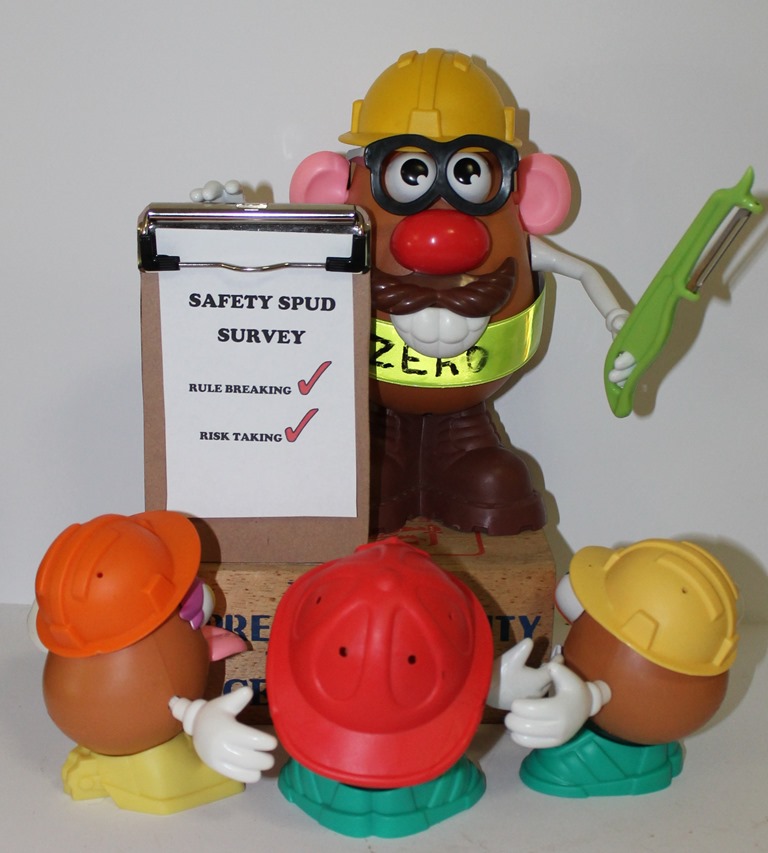Understanding Psychological Terminology and Applying it to Safety and Risk.

This is why we sometimes have trouble understanding a doctor who is trying to explain what is wrong with our own body. We didn’t do the 12 years education (full time) in medicine and so we end up in a position of trust. We have similar challenges when we go to a parent-teacher evening to talk about our children and have similar chasms in understanding about education. We didn’t do the 4 years minimum study on child development, curriculum and pedagogy. We live in a complex and specialized world, with all its benefits, but at the same time the by-products of specialization creates distance between the specialist and generalist.
This is the case with risk and safety people too who share their own language, acronyms and discourse that isolates others and creates professionalized power. Understanding this dynamic is the beginning of leadership and engagement with others. I have written on the issue of professionalization before:
https://safetyrisk.net/safety-and-risk-professionalisation/
https://safetyrisk.net/no-secrets-and-the-professionalisation-of-safety-knowledge/
What often happens with any new education and learning is that one receives new language to understand new things. I struggle to read the complex work of Kahneman and Tversky (Prospect Theory), Gigerenzer (Mathematics of Statistically Reliability, Prediction and Probability) Taleb (Risk and Economics), and Slovic (Psychology of Risk). I dropped Mathematics and Science in Year 9 High School and I struggle to understand complex Mathematics.
Fortunately I have a close friend who is a Mathematics genius and I go to him regularly for translations. Whilst I don’t deliberately seek to bamboozle others I know this is a by-product of 26 years study and I do my best to manage this. So, in the interests of translation and understanding I offer the following clarification on terminology relevant for understanding the Social Psychology of Risk and Safety. (Any of these terms are easily obtained through Google or Wikipedia).
Arational: not based or governed by reason. Neither rational nor irrational but non-rational.
Attribution: The giving of meaning to something that may not in fact have such meaning. Fundamental Attribution Error is common in humans such as giving credence to injury data or superstitious meaning to events.
Availability: The availability of evidence conditions what the human attributes to that evidence. Leads to overestimation or underestimation of probability and risk.
Bounded Rationality: Put forward by Herbert Simon that human rationality is highly limited. Humans are fallible and not omnipotent (all powerful) or omniscient (all knowing). The association of absolutes and perfectionism (zero) with humans is therefore ridiculous. Zero and Infinity are the same. Humans make decisions by ‘satisficing’ that is; coming to a point where they stop collecting data and make a satisfactory decision, sometimes imperfectly.
Cognitive Bias: There are more than 250 biases that humans use as a part of the way they make judgements and decisions. Most of these biases are unconscious but greatly affect decision making. The idea that human thinking, judgment and assessment can be neutral and objective is nonsense despite what one has been told in incident investigation training. http://en.wikipedia.org/wiki/List_of_cognitive_biases
Cognitive Dissonance: developed by Leon Festinger. Refers to the mental gymnastics required to maintain consistency in the light of contradicting evidence.
Collective Mindfulness: developed by Karl E. Weick and indicates the preoccupation with failure, reluctance to simplify interpretations, sensitivity to operations, commitment to resilience, and deference to expertise. This is not to be confused with the term ‘mindfulness’ as used in Buddhism.
Discourse: developed by Michael Foucault. The transmission of power in systems of thoughts composed of ideas, attitudes, courses of action, beliefs and practices that systematically construct the subjects and the worlds of which they speak. In Discourse Analysis the social psychologist seeks to understand the transmission of power in systems of thoughts composed of ideas, attitudes, courses of action, beliefs and practices that systematically construct the subjects and the worlds of which they speak. Language reveals ways of structuring ideas, knowledge, symbols and social practice.
Discernment: used to explain arational sensemaking with a particular focus on attributed value given to an activity or choice in sensemaking. Used in this book to mean perception that goes beyond the physical and material in sensemaking.
Heuristics: refer to experience-based techniques for problem solving, learning, and discovery. Heuristics are like mental short cuts (rules of thumb) used to speed up the process of finding a satisfactory solution, where an exhaustive rational search is impractical. Heuristics tend to become internal micro-rules.
Hubris: indicates a loss of contact with reality which results in extreme overconfidence and complacency.
Mentalities: comes from the French Annales School of History and refers to the history of attitudes, mindsets and dispositions. It denotes the social-psychological and cultural nature of history.
Myth: a fictional half-truth that forms part of an ideology that is embedded in culturally accepted practices.
Priming: is an implicit memory effect which influences response. Priming is received in the unconscious and transfers to enactment in the conscious. The way language and discourse is ‘framed’, ‘anchored’ and ‘pitched’ – primes thinking and judgments. For example, the repeated use of absolutes and ‘zero’ primes cynicism and scepticism in humans.
Psychology of Goals: All goals have psychological effect, goals are not neutral or objective and have by-products and trade-offs associated with their trajectory. Higher order goals (eg. diligence, leadership, love), are unmeasurable, whilst lower order goals (injury) are measureable.
Regression to the Mean: The mis-attribution of meaning to statistics often results in giving meaning to an aberration in data (eg. fluctuations in injury data). For example, attributing value to the coach yelling at the team at half time and winning the game. Or, attributing meaning to a presence or absence of a safety initiative for a lower injury score. The mean score is only known over time. Further read: http://www.socialresearchmethods.net/kb/regrmean.php
Representativeness: A heuristic judgment based on perception of representational value of some evidence. Often leads to overestimation or underestimation of risk, attributing value to a random event. Also leads to ‘the conjunction fallacy’ that is, making connections between events when there is none. Eg. lower injury score is equated with ‘safety’
Risk Homeostasis: Discovered by Gerald Wilde and infers how humans compensate or over compensate for social psychological arrangements. For example, driving slower in changed circumstances, taking greater risks through desensitization (being less sensitive to risk through habit and repetition).
Sensemaking: is about paying attention to ambiguity and uncertainty. Developed by Karl E. Weick to represent the seven ways we ‘make sense’ of uncertainty and contradiction.
Social Psychology: A branch of psychology focused on the way social arrangements affect decision making and judgments. Not to be confused with organisational (psychology of organisations) or clinical psychology (psychology of individuals). http://en.wikipedia.org/wiki/Social_psychology
Unconscious: processes of the mind which are not immediately known or made aware to the conscious mind. The term subconscious is also used interchangeably and denotes a state ‘below’ the conscious state. The subconscious is more associated with psychoanalytics and Freud and is used pejoratively (negatively), the notion of the Unconscious is used positively and more associated with Jung.



rajiv navadiya says
good knowledge sharing